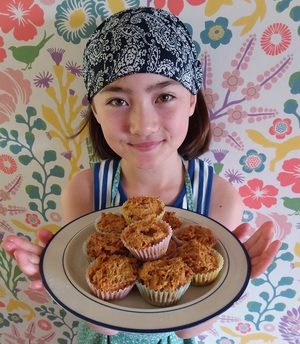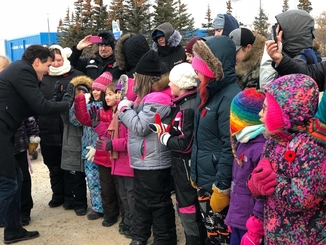Welcome Home to School: Recreating Classroom Community

Looming on the horizon for many teachers and families is the partial return back to the classroom, while continuing to swiftly adapt to virtual learning.
The DLC recently interviewed Derek Elliott, a grade 5 & 6 teacher in Powell River, BC about his teaching practice and vision for creating a culture of belonging to welcome students back to school. Instilling in students a sense of safety and community is pivotal to learning at this time–and the value of teachers cannot be understated, by virtue of their ability to create the conditions for meaningful learning to take place, starting at the social and emotional level.
“Creating that environment of positivity”, Derek says, is essential. “If they’re stressed, they can't begin to learn.” Many teachers are familiar with the “negativity bias principle”–which is that we are so hardwired to remember negative things, it takes five positive impressions to outweigh the one negative–and they already work with great care and intention to reinforce the positive in their students. As Derek notes, “If students aren’t feeling positive and safe, they are not going to take educational risks. So, I always keep in mind to strive for a 10:1 ratio of positive to negative comments. I often consider, what has this student got that we can celebrate. And this culture contributes to students showing positiveness towards each other.” He often suggests to students a goal of saying three positive things to their peers throughout the day.
Derek recently completed a post-bac curriculum development program, which has informed his emphasis on project-based learning. He views projects as an opportunity to empower students, “helping them discover the areas where they shine”, with their passions leading them to taking educational risks, which is what enables meaningful learning.
The principles of positivity and project-based learning that are fundamental to Derek’s teaching practice are clearly reflected in his student’s efforts:
 “One of my students, who is normally shy and timid, did an amazing project, a mountain bike instructional video. She was out in the woods with her dad filming her, and she was explaining how to go over obstacles and shift her weight; she was so clear and confident, and it just gave me this wonderful feeling to see a kid losing themselves in their learning. I think that's where the real joy is,” Derek comments. Another student researched dog-friendly ingredients, and baked muffins designed for dogs. One documented her experience meeting Justin Trudeau. Others raised rabbits and chickens. Yet another built a functional electric boat for his family.
“One of my students, who is normally shy and timid, did an amazing project, a mountain bike instructional video. She was out in the woods with her dad filming her, and she was explaining how to go over obstacles and shift her weight; she was so clear and confident, and it just gave me this wonderful feeling to see a kid losing themselves in their learning. I think that's where the real joy is,” Derek comments. Another student researched dog-friendly ingredients, and baked muffins designed for dogs. One documented her experience meeting Justin Trudeau. Others raised rabbits and chickens. Yet another built a functional electric boat for his family.
While recent home-based learning projects have been more “hands on” than what Derek’s students have produced in the past, with the return to school, Derek looks forward to being able to be by his students’ sides to guide them through the research process, and ask them challenging questions in the way that teachers can. Most importantly, Derek expects to do things that are “more collaborative and celebratory, rather than achievement based, [such as] activities and skills that aren't necessarily within the traditional curriculum[...] and community building activities.”
Below is a list of 5 classroom activities and ideas you may wish to try to establish a warm and positive classroom foundation when reuniting with students in person.
1. Hear from students directly about how they feel about their return to school.
Temperature-Check Survey: Ask students to rank how they’re feeling about coming back to school on a scale from 1 - 5, 1 being feeling happy and secure about the return, and 5 being sad and fearful. Have students close their eyes and raise anywhere from 1 - 5 fingers to show how they are feeling. Teachers can gain insight as to how individual students are feeling, as well as the class overall.
2. Learn from students what they need to feel a sense of safety, and co-create a group agreement based on their expressed needs.
Circle of Safety: This Heart-Mind Online resource offers a detailed lesson plan and interactive exercise (which may be adapted according to physical distancing protocol if needed) on creating a group agreement on safety and respectful behaviour in the classroom.
3. Encourage students to identify emotions and express how they cope with stress.
Cartoon Strip: Pixton is a website that allows students to create online cartoons. Invite students to illustrate characters in a stressful situation, and show how these characters cope using tools in their coping toolbox, such as talking to a friend, going for a walk, or taking deep breaths.
4. Replace “Can’t” with “Yet”, and empower students to develop a growth mindset using neuroscience.
Basketball Analogy: If a student seems discouraged, explain that their brain is developing right now, and making connections, much like training for a sport. Just as in basketball they might not be able to slam dunk the ball yet, if they continue to practice their skills, they may be able to do so in a year or two. Mistakes are part of the process of practice, and teachers are the supportive coaches to their teams of students.
5. Foster a culture of “positive principle” amongst students.
Year-Round Valentine’s: Have Student A say something positive about Student B to Student C. Student C is then assigned to “deliver” the positive message to Student B. Our Heart-Mind Valentines for Compassionate Love resource offers a more elaborate lesson plan for this type of activity.
Teachers and educators, we wish you a smooth and confident transition as you prepare to go back to school. Thank you for the valuable work you do to create the conditions for learning in your classroom community.

A still from Derek's student's mountain biking video project.







Comments
Post new comment